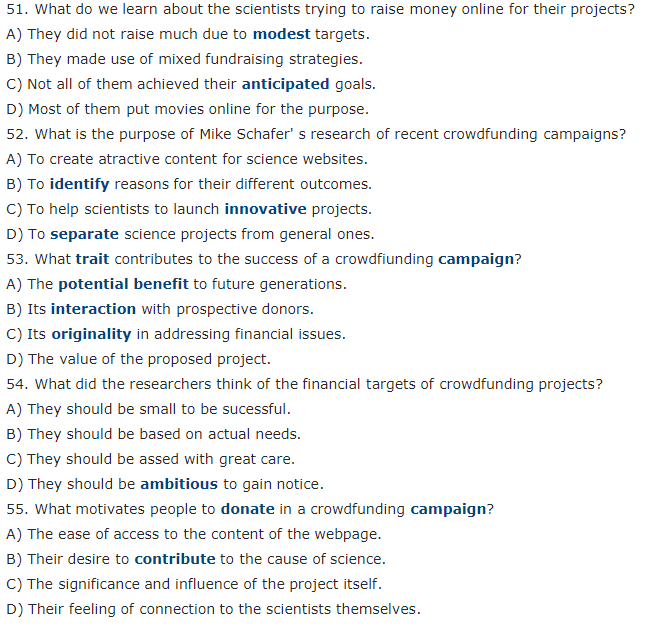-
Thinkingsmall,beingengaging,an
- 时间:2023-09-06 来源:小编 人气:
Thinking small, being engaging, and having a sense of humor don't hurt. Those are a few of the traits of successful science crowdfunding efforts that emerge from a recent study that examined nearly 400 campaigns. But having a large network and some promotional skills may be more crucial.
Crowdfunding, raising money for a project through online appeals, has taken off in recent years for everything from making movies to producing water-saving gadgets. Scientists have tried to tap Internet donors, too, with mixed success. Some raised more than twice their goals, but others have fallen short of reaching even modest targets.
To determine what separates science crowdfunding triumphs from failures, a team led by science communications scholar Mike Sch?fer of the University of Zurich examined the content of the webpages for 371 recent campaigns.
Four traits stood out for those that achieved their goals, the researchers report in Public Understanding of Science. For one, they use a crowdfunding platform that specializes in raising money for science, and not just any kind of project. Although sites like Kickstarter take all comers, platforms such as Experiment.com and Petridish.org only present scientific projects. For another, they present the project with a funny video because good visuals and a sense of humor improved success. Most of them engage with potential donors, since projects that answered questions from interested donors fared better. And they target a small amount of money. The projects included in the study raised $4,000 on average, with 30% receiving less than $1,000. The more money a project sought, the lower the chance it reached its goal, the researchers found.
Other factors may also significantly influence a project's success, most notably, the size of a scientist's personal and professional networks, and how much a researcher promotes a project on their own. Those two factors are by far more critical than the content on the page. Crowdfunding can be part of researchers' efforts to reach the public, and people give because "they feel a connection to the person" who is doing the fundraising—not necessarily to the science.

- 答案:
CBBAD
本题解析:小小思考、积极参与和幽默感并没有什么坏处。这些是最近一项对近 400 项活动进行的研究中得出的成功科学众筹活动的一些特征。但是拥有庞大的网络和一些宣传技巧可能更为重要。
众筹,通过在线呼吁为一个项目筹集资金,近年来在从制作电影到生产节水小工具的方方面面都取得了成功。科学家们也试图利用互联网捐助者,但取得了不同的成功。有些人提出了两倍以上的目标,但其他人甚至连适度的目标都没有达到。
为了确定科学众筹的成功与失败的区别,由苏黎世大学科学传播学者 Mike Sch?fer 领导的一个团队检查了最近 371 个活动的网页内容。
研究人员在《公众对科学的理解》中报告说,对于那些实现目标的人来说,有四个特征脱颖而出。一方面,他们使用专门为科学筹集资金的众筹平台,而不仅仅是任何类型的项目。尽管像 Kickstarter 这样的网站吸引了所有人,但像 Experiment.com 和 Petridish.org 这样的平台只展示科学项目。另一方面,他们用一个有趣的视频展示了这个项目,因为良好的视觉效果和幽默感提高了成功率。他们中的大多数与潜在的捐助者接触,因为回答感兴趣的捐助者问题的项目进展得更好。他们的目标是少量资金。研究中包含的项目平均筹集了 4,000 美元,其中 30% 的收入低于 1,000 美元。研究人员发现,一个项目寻求的资金越多,它实现目标的机会就越低。
其他因素也可能显着影响项目的成功,最显着的是科学家个人和专业网络的规模,以及研究人员自己推动项目的程度。这两个因素远比页面上的内容重要。众筹可以成为研究人员接触公众的努力的一部分,人们捐款是因为“他们感到与进行筹款的人有联系”——不一定与科学有关。